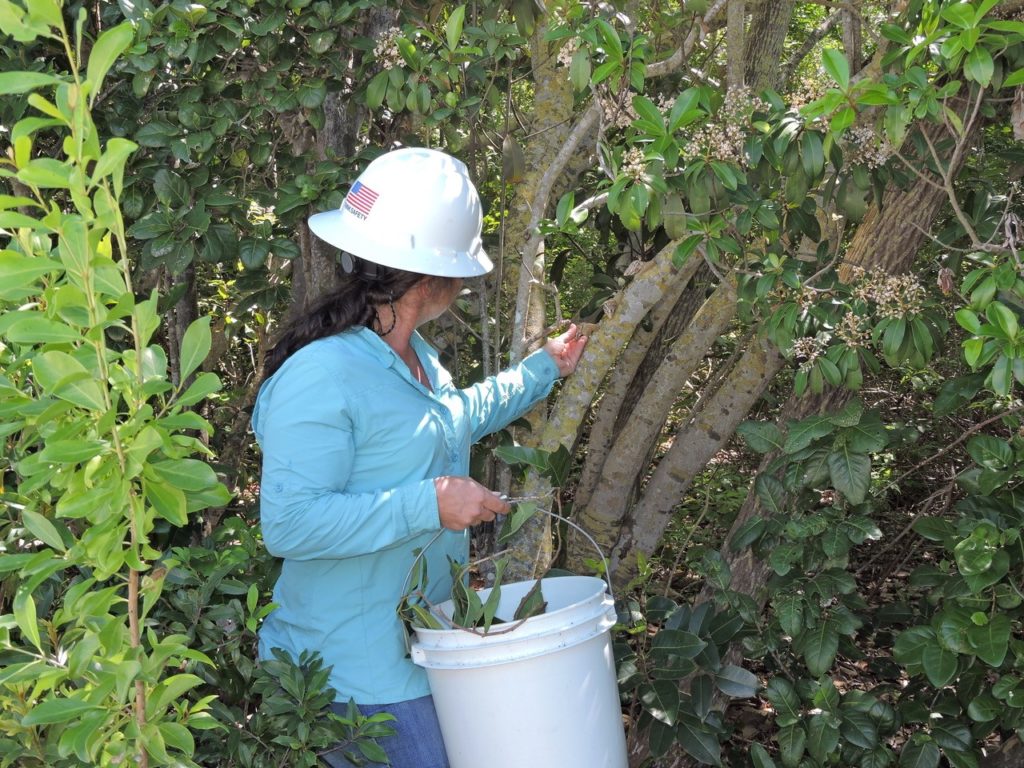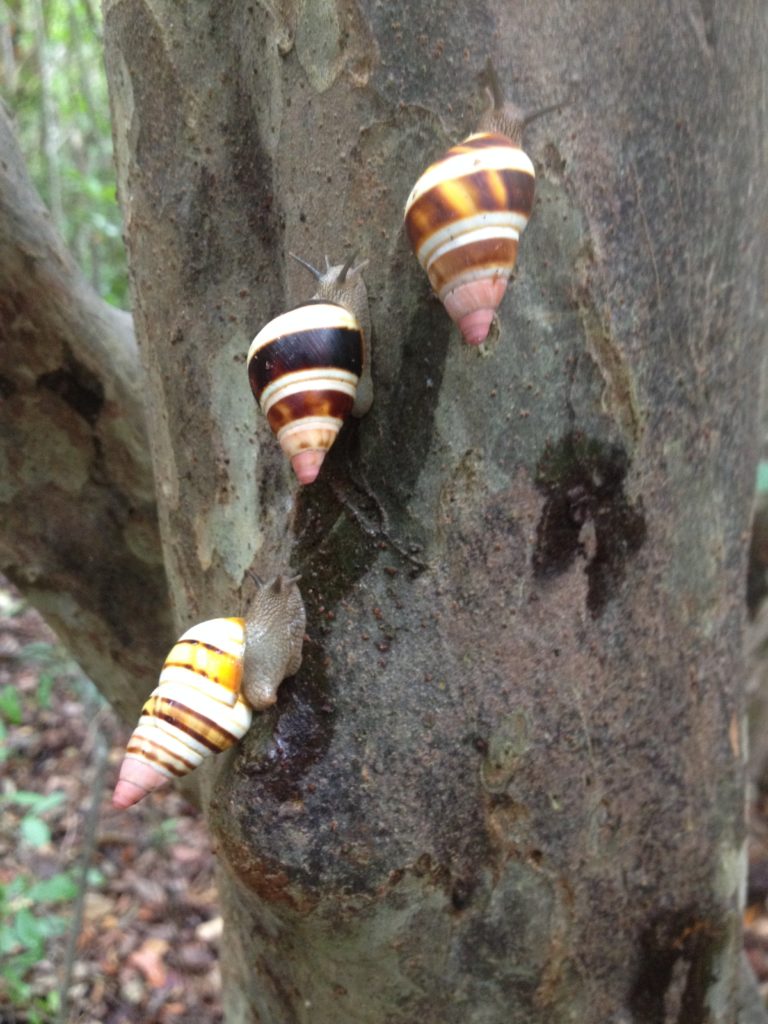
They call her “the snail lady.”
And Sara Hamilton takes it as a compliment.
The nickname, she says, recognizes the work that Florida Keys Electric Cooperative Association does to conserve tree snails, a vulnerable yet vital species.
“U.S. Fish and Wildlife and the Florida Fish and Wildlife Conservation Commission look to us as experts,” said Hamilton, FKEC’s environmental affairs manager. “They … truly think that without some of our work and data, the population would not be doing as well in the Keys as it is.”
The co-op, with offices in Tavernier and Marathon, has relocated some 85,000 tree snails from 11 miles of right of way going back to 1994. They include the state-protected Florida tree snail and the Stock Island tree snail, which is listed as threatened under the federal Endangered Species Act.
A highly invasive predator, the New Guinea flatworm, may make the co-op’s conservation efforts more important than ever.

“Several populations in Miami-Dade County area have been decimated,” said Hamilton. “If the flatworm takes off, we can’t predict what may happen.”
With a spiral tower shell, the tree snails thrive on lichen and fungi attached to pigeon plums, wild tamarind and other smooth-bark trees. The Florida tree snail’s shell comes in 59 color varieties, while the Stock Island species’ shell is basically brown and white.
They grow to just under 3 inches over an eight-year lifespan that begins as pea-size eggs buried in leaf litter at the bottom of trees. Their excrement plays a critical role in replenishing soil nutrients on the hard-rock island.
Each winter, the co-op carefully trims trees in the right of way flanked by Old State Road 905 and the Dagney Johnson State Botanical Park. Hamilton and crews search every branch and triple-check every cutting for the tiny animals.
The snails are inactive during these non-humid weeks and seal themselves to branches. Hamilton places these “hibernating” snails in thermal coolers in her car until the warmth “wakes them up.” Then she relocates them to trees 20 to 100 yards from the right of way. With a spritz of water on the bark, the snail reattaches to its new home for the season.
Over the past several years, the co-op crews helped USFWS locate three new populations of the Stock Island tree snail.
“U.S. Fish and Wildlife really appreciates that our crew goes above and beyond,” said Hamilton. “They know our work. They call me the snail lady.”
What does she recommend for other co-ops with potentially threatened species in their service territory?
“Being a good community partner is my No. 1 advice,” said Hamilton. “These agencies see what FKEC does and appreciate it. They come to value and acknowledge our work and how we value these critters.”